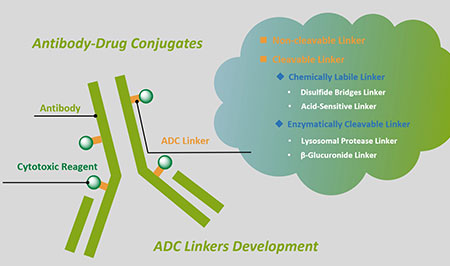1.Synthesis and Superpotent Anticancer Activity of Tubulysins Carrying Non-hydrolysable N-Substituents on Tubuvaline.
Sani M;Lazzari P;Folini M;Spiga M;Zuco V;De Cesare M;Manca I;Dall'Angelo S;Frigerio M;Usai I;Testa A;Zaffaroni N;Zanda M Chemistry. 2017 Apr 27;23(24):5842-5850. doi: 10.1002/chem.201700874. Epub 2017 Apr 12.
Synthetic tubulysins 24 a-m, containing non-hydrolysable N-substituents on tubuvaline (Tuv), were obtained in high purity and good overall yields using a multistep synthesis. A key step was the formation of differently N-substituted Ile-Tuv fragments 10 by using an aza-Michael reaction of azido-Ile derivatives 8 with the α,β-unsaturated oxo-thiazole 5. A structure-activity relationship study using a panel of human tumour cell lines showed strong anti-proliferative activity for all compounds 24 a-m, with IC;50; values in the sub-nanomolar range, which were distinctly lower than those of tubulysin A, vinorelbine and paclitaxel. Furthermore, 24 a-m were able to overcome cross-resistance to paclitaxel and vinorelbine in two tumour cell lines with acquired resistance to doxorubicin. Compounds 24 e and 24 g were selected as leads to evaluate their mechanism of action. In vitro assays showed that both 24 e and 24 g interfere with tubulin polymerization in a vinca alkaloid-like manner and prevent paclitaxel-induced assembly of tubulin polymers. Both compounds exerted antimitotic activity and induced apoptosis in cancer cells at very low concentrations. Compound 24 e also exhibited potent antitumor activity at well tolerated doses on in vivo models of diffuse malignant peritoneal mesothelioma, such as MESOII peritoneal mesothelioma xenografts, the growth of which was not significantly affected by vinorelbine.
2.Pretubulysin derived probes as novel tools for monitoring the microtubule network via activity-based protein profiling and fluorescence microscopy.
Eirich J;Burkhart JL;Ullrich A;Rudolf GC;Vollmar A;Zahler S;Kazmaier U;Sieber SA Mol Biosyst. 2012 Aug;8(8):2067-75. doi: 10.1039/c2mb25144b. Epub 2012 Jun 21.
Microtubules (mt) are highly dynamic polymers composed of alpha- and beta-tubulin monomers that are present in all dividing and non-dividing cells. A broad variety of natural products exists that are known to interfere with the microtubule network, by either stabilizing or de-stabilizing these rope-like polymers. Among those tubulysins represent a new and potent class of cytostatic tetrapeptides originating from myxobacteria. Early studies suggested that tubulysins interact with the eukaryotic cytoskeleton by inhibition of tubulin polymerization with EC₅₀ values in the picomolar range. Recently, pretubulysins have been described to retain the high tubulin-degradation activity of their more complex tubulysin relatives and represent an easier synthetic target with an efficient synthesis already in place. Although tubulin has been suggested as the dedicated target of tubulysin a comprehensive molecular target analysis of pretubulysin in the context of the whole proteome has not been carried out so far. Here we utilize synthetic chemistry to develop two pretubulysin photoaffinity probes which were applied in cellular activity-based protein profiling and imaging studies in order to unravel and visualize dedicated targets.
3.In vivo structural activity and optimization studies of folate-tubulysin conjugates.
Reddy JA;Dorton R;Dawson A;Vetzel M;Parker N;Nicoson JS;Westrick E;Klein PJ;Wang Y;Vlahov IR;Leamon CP Mol Pharm. 2009 Sep-Oct;6(5):1518-25. doi: 10.1021/mp900086w.
Herein we report on the potencies of 4 related folate-conjugated tubulysins constructed with either tubulysin B hydrazide (EC0305), tubulysin A hydrazide (EC0510), the N,O-acetal derivative of natural tubulysins (EC0317) or a tubulysin B ester (EC0302). Our results confirmed that EC0305 is the most favorable conjugate of the group due to its potent antitumor activity [100% cures at 1 micromol/kg, three times a week (TIW) for 2 weeks] and its favorably low toxicity profile. In contrast, the natural tubulysin B drug proved to be inactive against a human nasopharyngeal tumor model when administered at doses near to or greater than the maximum tolerated dose (MTD). When tested against more chemoresistant folate receptor expressing M109 and 4T1-cl2 tumors, EC0305 displayed superior antitumor activity over a previously disclosed folate conjugate of desacetylvinblastine monohydrazide (EC145). These studies demonstrate that EC0305 has significant antiproliferative activity against FR expressing tumors, including those which are generally more chemoresistant, and that EC0305 should be considered for development as a candidate for the treatment of advanced FR-expressing human cancers.







